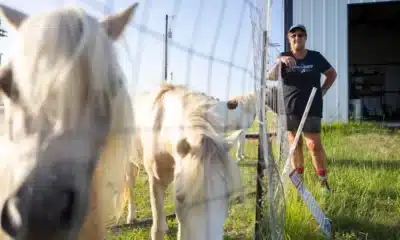News from the South - Missouri News Feed
State line competition complicates economic development for the Kansas City metro • Missouri Independent
SUMMARY: Kansas and Missouri, after years of competing for business relocations across the Kansas City state line, established a truce in 2019 to focus on regional economic growth rather than poaching. This collaboration has proven effective, with a Brookings Metro study highlighting the interdependence of both states on the Kansas City metro’s economy. Economic officials prioritize workforce quality over tax breaks for attracting businesses, while small local bonuses remain acceptable. Upcoming challenges, such as potential sports stadium incentives, test this cooperation, but recent successful campaigns, like hosting World Cup matches, demonstrate the benefits of regional solidarity in enhancing business and tourism.
The post State line competition complicates economic development for the Kansas City metro • Missouri Independent appeared first on missouriindependent.com
News from the South - Missouri News Feed
Audit: Wesley Bell-led prosecutor’s office lacked oversight and timekeeping
SUMMARY: A Missouri state audit of the St. Louis County Prosecuting Attorney’s Office under Wesley Bell found no major misconduct but highlighted concerns in office practices. Issues included undocumented meal expenses, a hotel charge for a witness who didn’t appear, reimbursement against policy, and animal care payments without contracts. Some attorneys held secondary municipal court jobs during office hours without proper time off. About 51% of timesheets lacked supervisor approval, though no policy required it before. Current Prosecutor Melissa Price-Smith has since implemented weekly supervisor reviews. The audit recommended stricter enforcement of spending rules, formal contracts, PTO requirements for outside work, and improved timekeeping.
The post Audit: Wesley Bell-led prosecutor's office lacked oversight and timekeeping appeared first on fox2now.com
News from the South - Missouri News Feed
Boeing workers on strike, cite 'unfair' contract
SUMMARY: Thousands of Boeing workers in St. Louis have gone on strike for the first time in nearly 30 years, rejecting a revised four-year contract despite offers of six-figure pay raises, $5,000 signing bonuses, and average salaries over $100,000. The union argues the contract fails to improve sick leave, vacation time, and working conditions, citing feelings of disrespect from management. Boeing, facing financial losses and talent attrition, expressed disappointment, highlighting a 40% average wage growth offer and alternative work schedules. No new negotiations are scheduled yet, and union members vow to remain on the picket line until demands are met.
On Monday, union members stood outside of Boeing’s headquarters in Berkeley, Missouri, with picket signs, expressing their frustration with management. Workers told FOX 2 that Boeing’s latest offer does not go far enough.
St. Louis News: FOX 2 covers news, weather, and sports in Missouri and Illinois. Read more about this story or see the latest updates on our website https://FOX2Now.com
Follow FOX 2 on social media:
YouTube: https://www.youtube.com/FOX2Now
Facebook: https://www.facebook.com/FOX2Now/
Twitter: https://twitter.com/FOX2Now/
Instagram: https://www.instagram.com/fox2now/
TikTok: https://tiktok.com/@fox2now
SnapChat: https://www.snapchat.com/add/fox2now
News from the South - Missouri News Feed
Former Greene County deputy arrested for stalking
SUMMARY: Joseph Schilling, a former Greene County deputy, was arrested in June 2025 for first-degree stalking and unlawful use of a weapon. Over several years, he allegedly emotionally abused a victim, harmed her pets—including killing her dogs—and made repeated threats involving his duty weapon. After the victim obtained a protection order, Schilling broke into her home, stole her phone, and was found near her workplace with loaded firearms and drug paraphernalia. Schilling was fired from the sheriff’s office in May 2025 and is held without bond. His next court appearance is scheduled for October 7, 2025.
The post Former Greene County deputy arrested for stalking appeared first on www.ozarksfirst.com
-
News from the South - Texas News Feed5 days ago
Rural Texas uses THC for health and economy
-
News from the South - Texas News Feed7 days ago
Yelp names ‘Top 100 Sandwich Shops’ in the US, several Texas locations make the cut
-
Mississippi Today2 days ago
After 30 years in prison, Mississippi woman dies from cancer she says was preventable
-
News from the South - Kentucky News Feed7 days ago
Harrison County Doctor Sentenced for Unlawful Distribution of Controlled Substances
-
News from the South - Texas News Feed7 days ago
Released messages show Kerrville officials’ flood response
-
News from the South - Louisiana News Feed7 days ago
Residents along Vermilion River want cops to help prevent land loss
-
News from the South - Louisiana News Feed6 days ago
‘Half-baked’ USDA relocation irritates members of both parties on Senate Ag panel
-
News from the South - West Virginia News Feed7 days ago
‘Good government’ group urges blue states to back away from a redistricting arms race










































